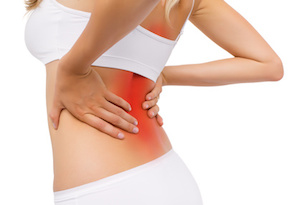 This article represents the views of its writer, and GrownUps does not endorse the content of this article or any product or service mentioned in it. Please seek advice from a professional in relation to your own circumstances.
This article represents the views of its writer, and GrownUps does not endorse the content of this article or any product or service mentioned in it. Please seek advice from a professional in relation to your own circumstances.
As you get older and perhaps more forgetful, remember that so does your body! Keeping mobile in later years is essential for an active and fulfilled retirement.
Many hope retirement will be filled with playing with grandchildren, getting green fingered in the garden and generally enjoying life – so what can you do to help prevent those agonising aches and pains?
Four of the most common body complaints in older people are:
Lower back strain – Lower back strain can be caused by numerous elements of the body not working in sync together. For example rolling your feet out or in as you walk can effect both the knees and back, and create other problems.
Abdominal core strengthening exercises are a great starting place to prevent and easing a lower backache.
Crunches should be performed with bent knees and the back can be supported further by leaning up on your elbows.
Try bent knee raises whilst lying on your back, one at a time, slowly and controlled while breathing deeply. Hold for 5 seconds on each leg and repeat 10 times each side.
Finally bridging is a great way to strengthen your hip extensors, buttock muscles and hamstrings. Which in turn will improve your back strength allowing you to stand for longer and improve balance. Lie on your back, arms either side with bent knees and hips neutral to the floor. Slowly raise your bottom as high as is comfortable off the floor, hold for 5 seconds and return slowly to starting position. Repeat 10 times.
Aching knees – Knee extension exercises can be done whilst sitting in any chair that supports your back fully. Sit right into the chair with your feet flat on the floor. Slowly extend each leg at the knee one at a time and return to the start position. Repeat 10 times.
A set of gentle lunges which builds the muscle that supports the knee can be really effective to help prevent further pain and damage to aching knees. Stand with one foot in front of the other and lower your body slowly not putting your body weight over your knee. Perform 10 lunges on each leg.
Pillow squeeze – It’s as simple as it sounds! Place a pillow in between your knees as you sit down and squeeze for 10 seconds. This will strengthen the inside of your legs to better support your knees. Repeat 10 times.
Arthritis – The inflammation of joints caused by wear and tear in old age. Three great non medical ways to help with arthritis pain are:
-Using hot and cold therapy, the cold will reduce swelling around the joints and the heat will keep the joints loose.
– Regular gentle exercise like swimming or water aerobics is a low impact way to stay active without the strain on your body.
– Losing weight can make a huge impact on the amount of pain you feel from arthritis, it will reduce the stress on your joints and increase mobility and further damage.
Nerve pain – This is incredibly common in old age and sciatica effects millions of people worldwide.
Stretching out the nerves along your hamstring will assist in loosening up the nerves down your legs and ease discomfort. Stand upright with one leg straight out on a stable object, for example a step. Keep your foot flexed and back straight as you lean forward towards your raised leg. Breathe deeply and hold for 20-30 seconds. Repeat on both legs 2-3 times.
A simple stretch down your neck and spine can be done by sitting on a chair, raise one leg straight with your foot flexed and lower your chin to your chest, and back up. Repeat this movement of chin to chest 5-10 times then change legs, you should feel the nerves down your neck loosen with each movement.
Finally lie flat on your back with your knees bent, pull your knee towards your chest and hold for 10 seconds while the other foot remains flat on the ground, repeat on the other side 10 times each.
Please seek professional advice before starting any exercise programme and report any changes in pain immediately.









Join the Discussion
Type out your comment here:
You must be logged in to post a comment.